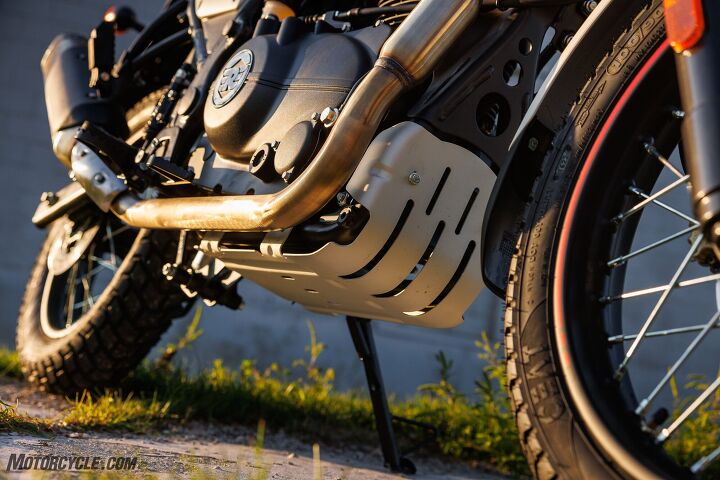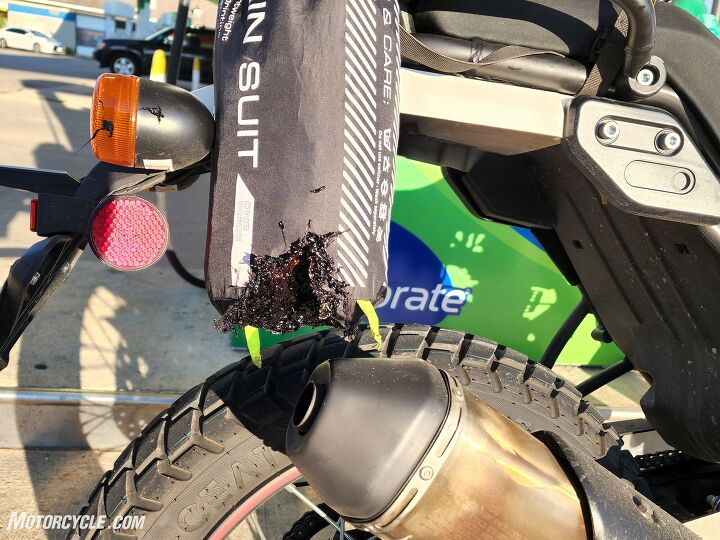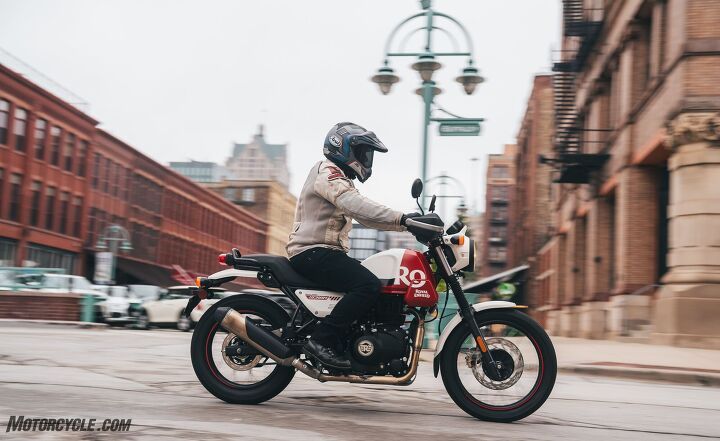Motorsports Racing News & Blog Articles
2023 Royal Enfield Scram 411 Review – First Ride
I’m a big fan of scramblers that can actually Scram, ya dig? When a production scrambler has the chops and capability to do what those customized rigs did back in the good ol’ days, well, that’s the real deal. Isn’t it? Royal Enfield has based this latest machine on its highly popular Himalayan ADV bike so, in theory, the new 411 should be nearly as capable as that machine while being imbued with its own style. A tweak here, some new paint there, a smaller front wheel, viola! Welcome to the Scram 411.
2023 Royal Enfield Scram 411Editor Score: 77%
| Engine | 15/20 | Suspension | 12/15 | Transmission | 6.5/10 |
| Brakes | 6.5/10 | Instruments | 3.5/5 | Ergonomics | 9/10 |
| Appearance | 8/10 | Desirability | 8.5/10 | Value | 8/10 |
| + Highs She’s a looker Lots of color options Tripper is simple and convenient | – Sighs A bit more powuh wouldn’t hurt Maybe a bit more powuh for the brakes while we’re at it, too I wish it didn’t melt my rainsuit (okay, that was my fault) |
2018 Royal Enfield Himalayan First Ride Review
2022 Royal Enfield Himalayan Review
The Royal Enfield Himalayan was an instant hit thanks to its rugged retro good looks, low MSRP, and overall accessibility when compared to other bikes in the ADV space. The Scram keeps the retro vibe but with a new stylish twist, and it looks to be even more accessible with a lower barrier to entry at $5,099. Aside from the smaller 19-inch front wheel and the reorganization of the windshield/instrument/headlight area, you’ll quickly understand why it says Himalayan slightly smaller than Scram 411 on the side panels.
Himalayan Scram 411
The air/oil-cooled, two-valve, 410cc SOHC Single first seen in the Himalayan is still crankin’ out the same ol’ claims of 24.3 hp at 6,500 rpm and 23.6 lb-ft of torque. The last time we dyno’d this long stroke engine it spat out 22.1 horses and 21.2 pounds of feet to its rear wheel. Just like before, you won’t be winning any drag races, and it’ll do 80 mph eventually (depending on conditions). Still, the mid-range torque is where the 411’s engine shines brightest – and it’s particularly fun to exploit on loose surfaces. Revving out the engine isn’t terribly rewarding. Around town or on backroads, the engine feels impressively smooth, but if you find yourself droning at 75 mph on the interstate for hours at a time, some sole-numbing vibes make their way through the footpegs.
The suspension uses the same linkage-type monoshock out back with 7.1 inches (180mm) of travel. The 41mm fork has lost just under half an inch (10mm) from the Himalayan, but still has 7.5 inches (190mm) of travel. Overall, the suspension feels fairly basic, because it is – a stepped preload ring on the shock offers your only adjustment. Ground clearance is stated at nearly eight inches (200mm). The damping felt more harsh on the Scram 411 than I remember the Himalayan being. Under normal use on smooth roads – paved or not – the suspension is entirely adequate. Although I never had the opportunity to bottom the suspension, the damping doesn’t feel terribly progressive; rather it feels like it slams into some fairly restrictive damping over larger impacts on rough roads (potholes, large road seams, railroad crossings, etc.).
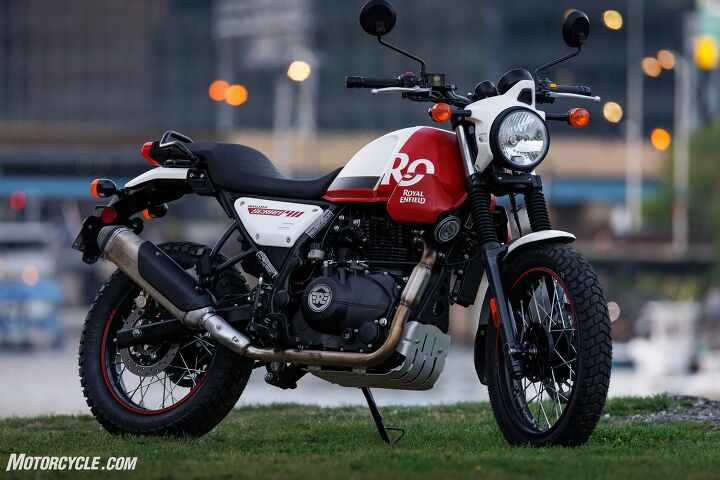
The Scram is a good-looking machine, in my opinion. I really like the shape of the headlight nacelle and the sculpting of the rear tail section. I even dig what they did with the little protruding “urban badge plate” from the fuel tank that is basically just there to cover the front rack’s mounting point. Also, there are seven colorways (all of which share the $5,099 price). When was the last time you saw seven different color options for a single motorcycle?
The five-speed cable-actuated transmission helps you work your way to top speed but can feel a bit notchy at times on the way. Clutch pull isn’t the lightest, but it isn’t heavy either.
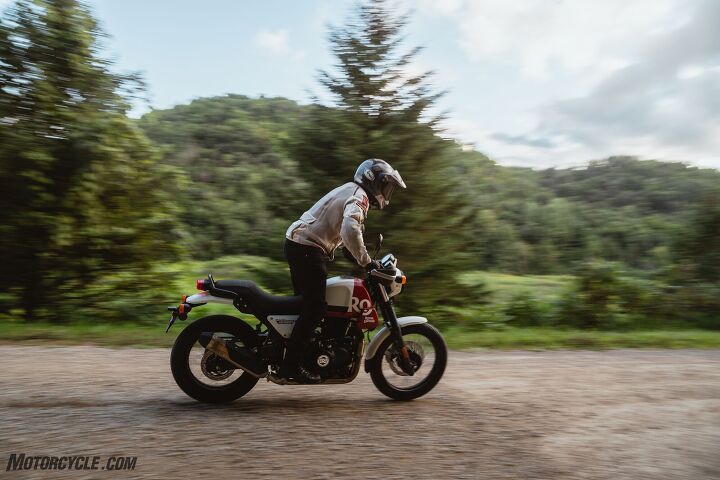
The Scram 411 I was riding was outfitted with some protective bits including handguards, a skid plate, and an oil cooler guard in addition to a blingy lil’ oil fill cap.
Ergonomics for me at 5’8” with a 30-inch inseam were perfectly neutral. I was able to place my feet flat on the ground, and when cruising, the bend at the knee never felt cramped. Standing was an equally comfortable affair, though the side panels protruded annoyingly into my calves.
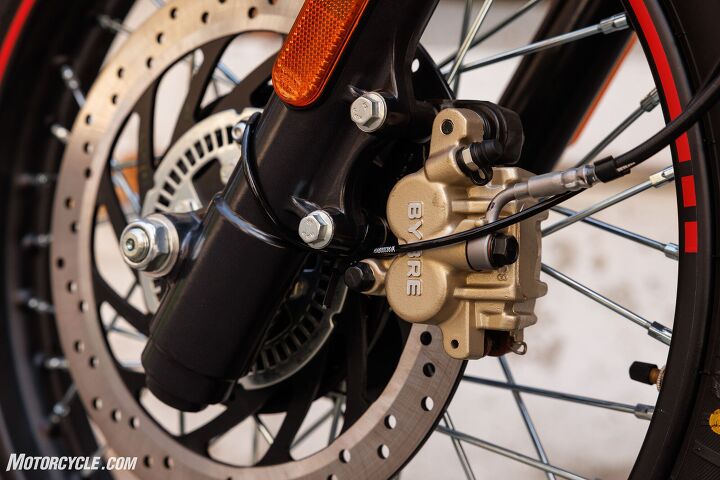
The Scram 411’s single 300mm front rotor will get the job done off-road, but you should be sure to plan ahead on the asphalt.
I appreciate the large rear brake pedal, but was kind of bummed to learn that the Himalayan’s switchable ABS at the rear wheel was not an option on the Scram 411. RE reps mentioned that this will likely be standard on Scram’s down the road. So, we have ABS on all the time, but with the lack of power from the front brake’s lever, you’d be hard pressed to get into it on-road anyway. I was impressed by the CEAT tires. They provided plenty of grip on-road and were predictable in the gravel.
1300 miles on the Scram
The folks at Royal Enfield treated our group to nearly 400 miles of backcountry roads from east to west Wisconsin and back again through some seriously dense greenery that could only be made possible by Midwest humidity. Unfortunately, I was only able to tag along for the first day. After that, I had 400 miles between me and a summer camp wedding in Michigan that I needed to be at by 1:00 pm the following day.
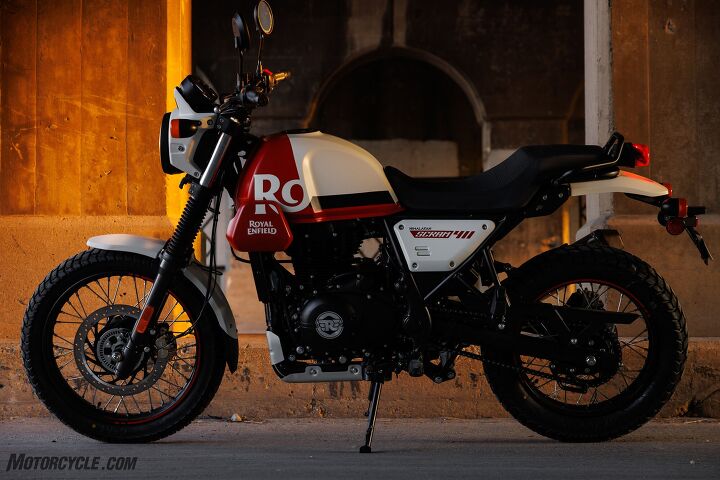
My longest day on the Scram 411 was just over 400 miles through highways, small towns, and interstates. The Scram’s single-piece seat was surprisingly comfortable during that time. One of the more comfortable in recent memory. RE says they focused heavily on making sure the seat was a comfy place to perch through extensive pressure mapping research.
Departing before daylight broke had me cruising down two-lane highways through fog so dense that I couldn’t use my (smoked) visor or the clear Biltwell goggles the folks at RE supplied due to my poor planning. So there I was, bare-faced in the dark, water streaming down my face and collecting on my eyelashes for hours. I thought of the groggy deer having just woken up for their daily commute across the highways that I would never have a chance of seeing before it would be much too late for the Scram’s braking power (or me) to do anything about.
As the sun began to turn the sky from impenetrable black to dark blue, the veil was lifted from the massive green rolling hills lining the highway shrouded in hanging ethereal lakes. It was absolutely stunning. Now that I could see, I was happy to be on the Scram 411 as we motored our way east. The 411’s powerplant feels like it was made for loping down blue highways through the Wisconsin countryside in the midst of a warm, humid midwestern sunrise. Perfect.
Well, it was perfect until I stopped for gas and realized my rain suit had come dislodged from the strap I had cranked over it. Thankfully, I had the forethought to wrap its drawstring around a strap on the opposite side so I wouldn’t lose it in such a situation. This allowed it to come loose (but not fall off!), and hang perfectly behind the muffler. There it hung for who knows how long, with the hardworking Single’s hot breath belching out toward my only hope of staying dry through a forecast of summer thunderstorms in the Midwest.
Perhaps out of some sort of cosmic sympathy, the universe held off from any further humiliation and I stayed dry for the remainder of my trip.
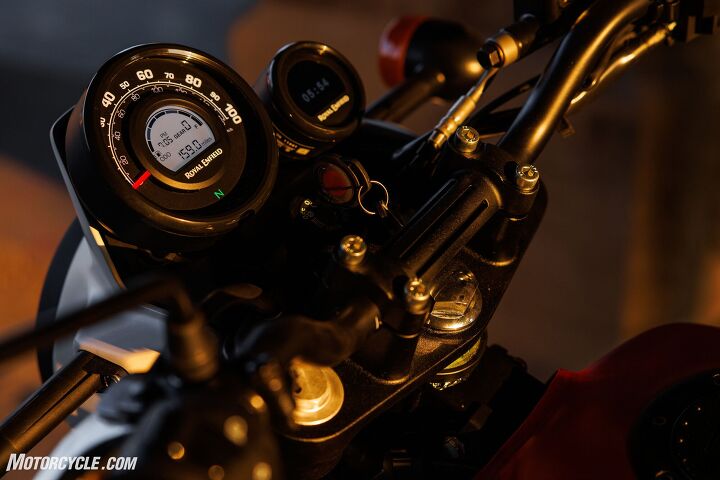
The Scram 411’s dash doesn’t offer a tach, but you do get a fuel gauge, gear indicator, odo, trip 1 & 2, and for the first 1,000 Scram’s imported, the Royal Enfield/Google Tripper seen on the right. I used the Tripper for the majority of my 1,300 miles with the Scram and it worked great, giving just enough info (distance to turn, and which way to go). The RE app was a little clunky at times, but its simplicity seemed to help it function better than many of the other complicated manufacturer apps that I’ve used in the past. The Tripper will be offered as an optional accessory after the first set of Scram’s are sold.
Eventually, those quiet two-lanes widened to busy interstates as I neared Milwaukee and headed for Chicago. All too often, time is of the essence and interstates are a necessity. It’s not so bad when you’re on your own with the throttle to the stop to maintain 75 mph or so, but when you have cars zooming by you with a considerable speed delta, well, you wish you were back in the holler. That is, of course, unless you live somewhere that is more amenable to motorcycles like California! In gridlocked commuter traffic, the Scram 411 has more than enough oomph to get you to work with a smile on your face. And that’s the idea, Royal Enfield tells us. The Scram 411 is positioned to deliver you to work in a fun way during the week and allow for some spontaneous adventure during the weekend.
Three Amigos 300cc ADV Bike Comparison
So does the Scram 411 deliver on Royal’s promise of a stylish Himalayan variant? I would say, yes. Given that that is exactly what it is. There are basically no mechanical differences between the two aside from the front wheel. The smaller front wheel should make the machine more agile, and will likely suffer somewhat in the dirt over obstacles, but it wasn’t an issue on gravel roads, and there aren’t many sets of corners to rail through in the Midwest. But, during the short stints on the ones we found, the Scram 411 handled confidently, and I had to really work to scrape its side stand (basically to prove a point that it would be the first thing to touch down). On our canyon roads in Southern California, you may have that opportunity more often, but you’ll have to work for it.
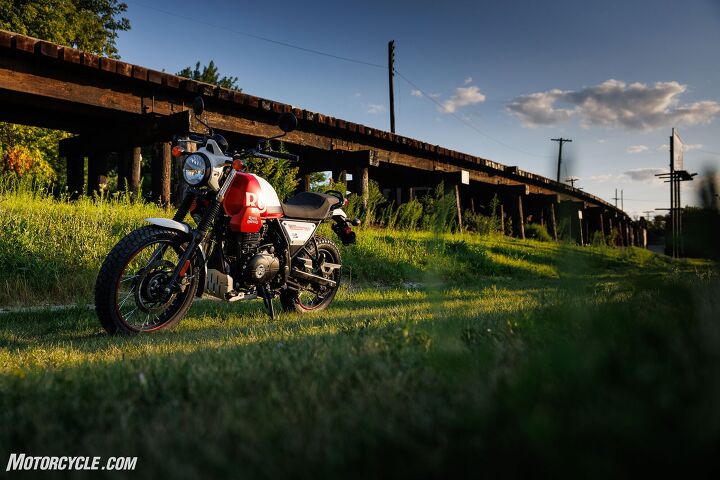
The fuel gage seems to be a little conservative. Often it would start flashing at 130 miles or so, but over quite a few tanks I averaged 45 mpg which should put it closer to 180 miles before running its four-gallon tank dry. If you’re not holdin’ ‘er wide for hundreds of miles on end, you’ll probably get better mileage, too.
I’d say if you’re a fan of the Himalayan, but dig the style of the Scram 411, you’re not likely to be disappointed with this latest model from the Indian manufacturer. For me, I like a lil more pep in my step, so I’ll be looking forward to that new liquid-cooled 450 that the guys were just testing in the Himalayas. More to look forward to on the horizon from Royal Enfield.
|
In Gear
|
| 2023 Royal Enfield Scram 411 | |
|---|---|
| MSRP | $5,095 |
| Engine Type | 411cc single cylinder, 4-stroke, SOHC, 2-valve, air-/oil-cooled |
| Bore and Stroke | 78mm x 86mm |
| Compression Ratio | 9.5:1 |
| Max power (claimed) | 24.3 hp @ 6,500 rpm |
| Torque (claimed) | 23.6 lb-ft @ 4,000-4,500 rpm |
| Ignition | Digital electronic ignition |
| Clutch | Wet multi-plate |
| Transmission | 5-speed constant mesh |
| Lubrication | Forced lubrication, wet sump |
| Fueling | Electronic fuel injection |
| Starting | Electronic |
| Final Drive | Chain |
| Frame | Half-duplex split cradle frame |
| Front Suspension | Telescopic, 41mm forks, 7.5 in (190mm) travel |
| Rear Suspension | Monoshock with linkage, 7.0 in (180mm) travel |
| Front Brake | 300mm disc, 2-piston floating caliper |
| Rear Brake | 240mm disc, single-piston floating caliper |
| Front Tire | CEAT 100/90 – 19″ |
| Rear Tire | CEAT 120/90 – 17″ |
| Wheelbase | 57.3 in. (1455mm) |
| Ground Clearance | 7.8 in. (200mm) |
| Seat Height | 31.3 in. (795mm) |
| Curb Weight (Claimed) | 407 pounds (without fuel) |
| Fuel Capacity | 4.0 gal. (15 L) |
| Colors | White Flame, Silver Spirit, Blazing Black, Skyline Blue, Graphite Red, Graphite Blue, Graphite Yellow |
| Warranty | 3 year, unlimited miles with roadside assistance |






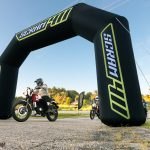










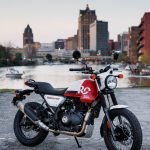

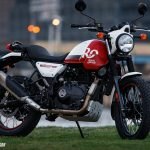













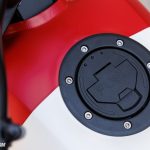
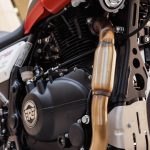

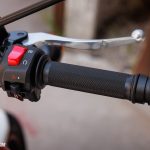
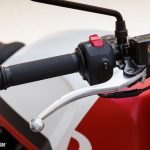

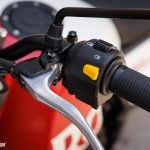
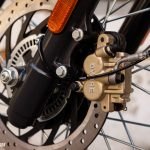

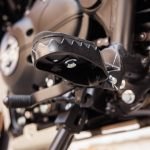
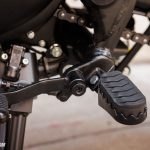
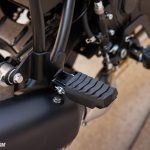



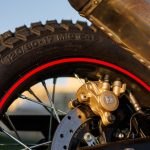
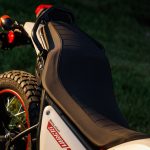
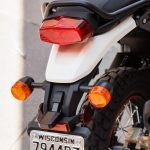

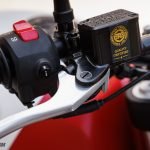

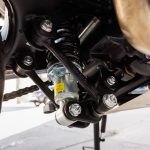
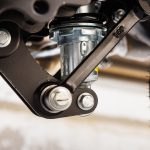
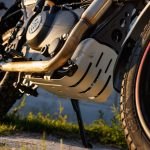
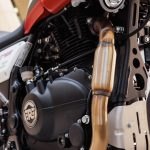
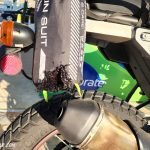

We are committed to finding, researching, and recommending the best products. We earn commissions from purchases you make using the retail links in our product reviews. Learn more about how this works.
Become a Motorcycle.com insider. Get the latest motorcycle news first by subscribing to our newsletter here.
The post 2023 Royal Enfield Scram 411 Review – First Ride appeared first on Motorcycle.com.
Copyright
© Motorcycle.com


